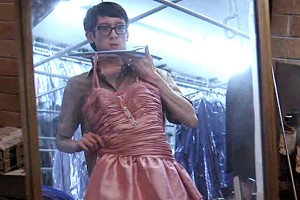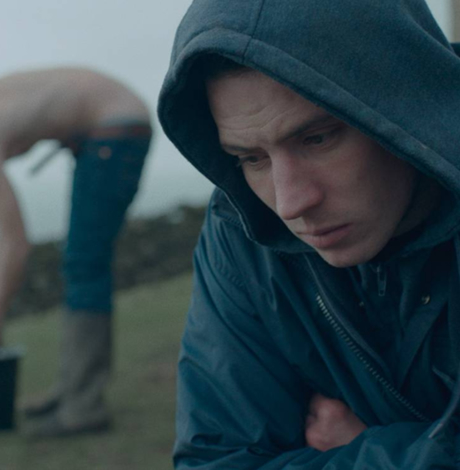Movies
Succinct cinema
Theatrical bon mots abound at this weekend’s shorts festival
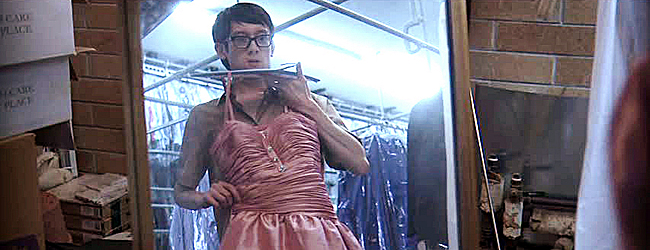
Editor’s note — “Today” in this article refers to Friday, Jan. 28, the Blade’s “street date.”
‘Rewind: The Best of DC Shorts’
7 and 9:30 p.m. in Theatre 1
7:30 and 10 p.m. in Theatre 2
Today and SaturdayFilms are also shown on Saturday beginning at noon
including a free show of animation, comedy and drama
at noon for families and kids over 8.Atlas Performing Arts Center
1333 H St. N.E.$50 all-access pass for all screening
or $12 per show. Available online
at rewind.dcshorts.com/tickets
or at the Atlas box office.The “Celebrating Diversity” block of LGBT films is at 7:30 tonight in Theatre 2,
while other blocks, including films defined as local, foreign, comedy, and
documentary, are at different times — see website for details.
The long and the short of it is that no one can really agree on what’s a film short.
The Academy of Motion Picture Arts and Sciences, annual purveyor of the coveted Oscars and arbiter of film in general, draws the boundary line between feature length and short films at 40 minutes. The Internet Movie Database draws the line at 45 minutes.
The only rough consensus today is that short films are not seen as commercial, that they are typically the first stage for young filmmakers and that the main venue to see them is at film festivals and on Internet sites like YouTube.
But some of the edgiest and most creative film work today is in these short subjects. And the D.C. Film Alliance brings a batch of them for viewing in clusters, tonight and Saturday night, in the D.C. Shorts Film Festival at the Atlas Performing Arts Center, on D.C.’s H Street N.E. corridor. Some of the best from the past seven years of the festival are being billed as “Rewind” and some of those, grouped together under the heading of “Diversity,” focus on LGBT issues. Four of those films are shown tonight at 7:30 p.m.
Short films were the norm until the 1920s and short comedies especially were the norm for early film fare — with a total of 220 shorts alone filmed by the Hal Roach Studio for the “Our Gang” series (otherwise known as “The Little Rascals”), from the 1920s through 1944. Many of Charlie Chaplin’s “Little Tramp’ comedies were shorts and so were the early films of Buster Keaton and Laurel and Hardy.
In the 1930s, the system of distributing film to movie houses changed radically as studios began to insist on sending out a package — take it or leave it — consisting of a main and supporting feature and a cartoon and newsreel. The so-called “two-reel shorts” promptly went into commercial decline and even Hal Roach moved Laurel and Hardy full-time into feature-length films after 1935.
“The magic of making a short film is in reducing a story line to the bare essentials, getting to the heart fast and cutting out all the fluff,” says D.C. Shorts festival sponsor Jon Gann, director of the D.C. Film Alliance. He acknowledges, however, that “the sad part is that nearly all short films go unseen by audiences and we’re here to change that. Where else can you see around 10 films in two hours?”
He’s glad that with the surge of new interest in filming shorts has also come a spurt of interest in viewing them. One pay TV channel, ShortsTV, is the first channel wholly dedicated to them, and the BBC Film Network also showcases curated shorts. And every year, London-based Shorts International, which in addition to ShortsTV also offers an HD channel of shorts on the Dish satellite network, arranges for the release in movie theaters of the current crop of Oscar-nominated shorts — to be shown this year for one week beginning Feb. 11 at the Landmark E Street Cinema in D.C.
Gann expects the D.C. upsurge of interest in film shorts to continue with a sizable audience turnout for this weekend’s festival. He also hopes that people will be interested enough to ask to join the selection committee for the 2011 festival to be held here in September. This weekend there are specialty blocks planned for foreign films, local films, documentaries and animation, as well as those pitched to LGBT tastes. Free films for the family are also offered at noon at Saturday.
Four of the LGBT themed shorts are shown under the rubric of “Celebrating Diversity” tonight at 7:30. Another two — 13-minute-long “signage” (by local writer-director and actor Rick Hammerly and featuring gay D.C. actor Jeffrey Johnson) and and seven-minute-long “Little Hands” (about a gender change dilemma) — are shown respectively Saturday at 3 and 4 p.m. in the blocks for local D.C. and documentary films.
‘Diva’
A seven-minute short from France, this film (in French with subtitles) from the D.C. Shorts 2007 festival is about middle-aged Vincent, a cross-dresser leaving behind home and a failed romance. His heart is broken when his lover breaks off their 12-year relationship, telling him bluntly on the phone, “I’m not a faggot and I never want to see you again.”
Vincent blurts out that he will leave “this little shit town forever” and move to Paris. Portrayed with poignant grace by Thomas Courcoul, we see him arrive at his Paris hotel ready now for a new life, but still sobbing, sniffling away his tears, until finally relief comes with his sudden laugh at how pathetic he feels. He begins to finger fondly a pink feather boa and then shaves his chest (but only at the bra-line) and applies makeup, lipstick and wig. Next he is strolling a Paris park in a dress and pink pumps and matching pink hat and handbag, conveying a touch of further glamour (as well as to conceal any lingering tears) with Jackie-O dark glasses.
After a park carousel ride in a private reverie feeling so free, a young tough suddenly snatches Vincent’s purse, and the chase is on. Swiftly doffing wig, hat and pumps, Vincent pursues the purse snatcher with preternatural feline grace and in a muscular showdown retrieves her purse, and then stands over him, burly and strong. As the would-be thief slinks away, Vincent looks at first triumphant but then sobs and retraces her steps, until finally she sits alone, her face a mask of feelings but with pride as well as resolve and determination taking first place.
Writer-director Josephine MacKerras, a filmmaker living now in both Paris and London, but with a childhood spent in Australia and China, studied filmmaking at New York University. “Diva” is a work of real cinema skill, a simple story that whets your appetite to see more, leaving you wondering about what came before and about what might happen next.
‘Freedom on the Rocks’
The only gay bar in Jerusalem, Shushan, is a melting pot for LGBT Jews and Palestinian Arabs alike. In this 10-minute documentary by Yun Suh, Korean-American Buddhist and bisexual, a TV journalist and documentarian based in Berkeley, Calif., we hear from the bar owner, 35-year-old Sa’ar Netanel, that “Jerusalem is really a city of borders — there is a border between Jews and Palestinians, between secular and ultra-Orthodox, between straight and gay.” Netanel, a secular Jew, opened the bar in 2003, the same year he won election as Jerusalem’s first openly gay city council member. He admit that “when I read in the Bible that I could be killed for being gay, I understood what it was like to be Palestinian.”
The film features interwoven stories of the daily fight for dignity by five Israelis — three Jews and two Arabs — who navigate the minefield of politics, religion and discrimination to live and love openly, set against the construction by Israel of the separation wall and the struggle for a gay pride parade in the city.
“Everyone comes from their own ghetto,” says Sa’ar, “and meets at Shushan.” Yun Suh says, of the five, “here’s a group that has been cast away by both sides but is modeling for the larger society what tolerance and co-existence can look like.” But it begins as trouble squared, for each of them is breaking two of the biggest taboos of Middle eastern society — same-sex relations and intimacy between Jews and Arabs.
“It’s hard to be gay in Ramallah,” says one of them, 19-year-old Boody, a nickname for the devout Muslim Palestinian who is shown on his prayer rug but also dancing at Shushan as a drag queen — the self-styled “Queen of Palestine.” With Yun Suh’s camera crew behind him, we also follow the slender and attractive Boody making his way at night from Ramallah, the Palestinian city divided from Jerusalem by the wall which he easily scales, also crawling through razor-wire and dodging Israeli Defense Force border patrols to reach the sanctuary of Shushan. The film ends when Boody decides he must leave home — where his mother cannot accept that he is gay and stills hope he will marry — for the U.S., his eventual refuge, and he now lives in a small town near Cleveland.
The other four profiled also have real stories to tell — in addition to bar-owner Netanel; Adam Russo, a 19-year-old Israeli Jewish settler in the West Bank near Jerusalem, former soldier and now a gay rights activist; and a lesbian couple in their early 30s, an Israeli Arab nurse, Samira Saraya, and a Jewish Israeli doctor, Ravit Geva, lovers for four years who work at the same hospital, who embrace each other but also face tension between them over ethnicity and the Intifada.
‘Gayby’
This 2010 comedy is 12 minutes of droll social commentary and pure film farce about the wish of Jenna, a permanently single woman, to persuade her gay best friend to help her make a baby, the old-fashioned way, not in a test-tube or with a turkey baster. It’s a comedy but it’s well enough written and directed by Jonathan Lisecki that the meeting of the two old friends to discuss this awkward topic and then in the bedroom to consummate it moves beyond the merely topical to the truly human.
Actor Matthew Wilkas portrays the disbelief at first and then the growing discomfort Jenn’s friend feels as the action moves swiftly towards the coital encounter. Yes, he concedes, that they had done it before, in college, but insists that “we were really, really drunk when we did it” then. But when she asks him if he thinks he can still “do it,” his male bravado immediately asserts itself — “What is this, a dare? Yes, I can do it, I can put it in anything. I’m a guy.”
Lisecki shows a sure hand with this short look at a real-life dilemma that could almost be credible, between two old friends each playing on a different team. He lives in New York City among those in the milieu of “Jenn” (well acted by Jenn Harris) and her friend Matthew, and is married to New Yorker magazine music critic Alex Ross.
‘The Queen’
This clever-but-touching eight-minute comedy, from the D.C. Shorts festival in 2009, is by another Korean-American writer-director, Christina Choe, based now in Brooklyn where she’s an master’s of film art candidate for writing-directing at Columbia University. She calls “The Queen” — which was selected as “Best of Fest” at the Palm Springs International Short Film Festival” and has also made the rounds of LGBT film festivals — a film about a nerdy Korean-American teenage boy, Bobby, stuck working at his family dry-cleaning business on prom night.
Instead of doing his algebra, Bobby is doodling a sketch of a superhero, outlining the crotch with hungry relish, while being bothered by his mother (played by Choe’s own mother) who wants only to know about his plans for college and lecturing him that his grades aren’t good enough. When she departs, leaving Bobby to clear the register and lock up, he relents and opens the door when the high school prom queen begs to be let in, claiming a “fashion emergency” with her dress. But he only agrees to admit her after hours when he sees her hunky boyfriend, played by actor Tamir Kapelian.
This leads to a fantasy interlude that’s both poignant and funny. Bobby is well played by 19-year-old Sean Tarjyoto.
Movies
After 25 years, a forgotten queer classic reemerges in 4K glory
Screwball rom-com ‘I Think I Do’ finds new appreciation
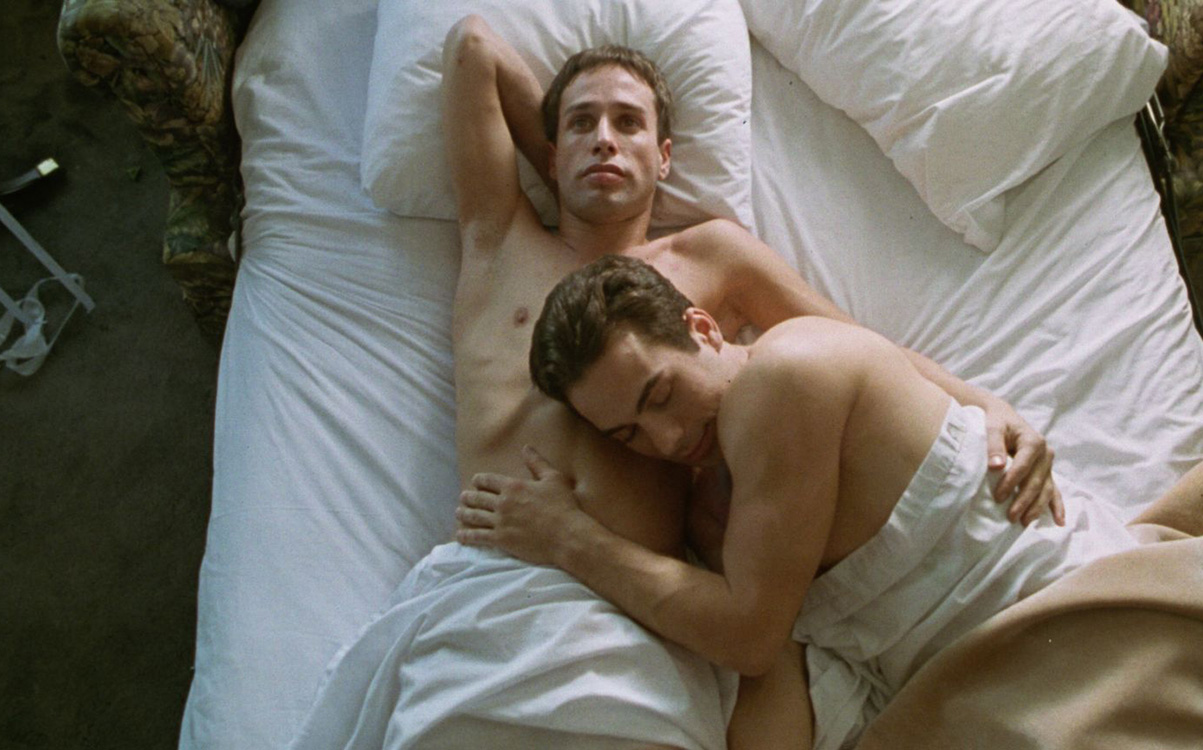
In 2024, with queer-themed entertainment available on demand via any number of streaming services, it’s sometimes easy to forget that such content was once very hard to find.
It wasn’t all that long ago, really. Even in the post-Stonewall ‘70s and ‘80s, movies or shows – especially those in the mainstream – that dared to feature queer characters, much less tell their stories, were branded from the outset as “controversial.” It has been a difficult, winding road to bring on-screen queer storytelling into the light of day – despite the outrage and protest from bigots that, depressingly, still continues to rear its ugly head against any effort to normalize queer existence in the wider culture.
There’s still a long way to go, of course, but it’s important to acknowledge how far we’ve come – and to recognize the efforts of those who have fought against the tide to pave the way. After all, progress doesn’t happen in a vacuum, and if not for the queer artists who have hustled to bring their projects to fruition over the years, we would still be getting queer-coded characters as comedy relief or tragic victims from an industry bent on protecting its bottom line by playing to the middle, instead of the (mostly) authentic queer-friendly narratives that grace our screens today.
The list of such queer storytellers includes names that have become familiar over the years, pioneers of the “Queer New Wave” of the ‘90s like Todd Haynes, Gus Van Sant, Gregg Araki, or Bruce LaBruce, whose work at various levels of the indie and “underground” queer cinema movement attracted enough attention – and, inevitably, notoriety – to make at least their names familiar to most audiences within the community today.
But for every “Poison” or “The Living End” or “Hustler White,” there are dozens of other queer films from the era; mostly screened at LGBTQ film festivals like LA’s Outfest or San Francisco’s Frameline, they might have experienced a flurry of interest and the occasional accolade, or even a brief commercial release on a handful of screens, before slipping away into fading memory. In the days before streaming, the options were limited for such titles; home video distribution was a costly proposition, especially when there was no guarantee of a built-in audience, so most of them disappeared into a kind of cinematic limbo – from which, thankfully, they are beginning to be rediscovered.
Consider, for instance, “I Think I Do,” the 1998 screwball romantic comedy by writer/director Brian Sloan that was screened – in a newly restored 4K print undertaken by Strand Releasing – in Brooklyn as the Closing Night Selection of NewFest’s “Queering the Canon” series. It’s a film that features the late trans actor and activist Alexis Arquette in a starring, pre-transition role, as well as now-mature gay heartthrob Tuc Watkins and out queer actor Guillermo Diaz in supporting turns, but for over two decades has been considered as little more than a footnote in the filmographies of these and the other performers in its ensemble cast. It deserves to be seen as much more than that, and thanks to a resurgence of interest in the queer cinema renaissance from younger film buffs in the community, it’s finally getting that chance.
Set among a circle of friends and classmates at Washington, D.C.’s George Washington University, it’s a comedic – yet heartfelt and nuanced – story of love left unrequited and unresolved between two roommates, openly gay Bob (Arquette) and seemingly straight Brendan (Christian Maelen), whose relationship in college comes to an ugly and humiliating end at a Valentine’s Day party before graduation. A few years later, the gang is reunited for the wedding of Carol (Luna Lauren Vélez) and Matt (Jamie Harrold), who have been a couple since the old days. Bob, now a TV writer engaged to a handsome soap opera star (Watkins) is the “maid” of honor, while old gal pals Beth (Maddie Corman) and Sarah (Marianne Hagan), show up to fill out the bridal party and pursue their own romantic interests. When another old friend, Eric (Diaz), shows up with Brendan unexpectedly in tow, it sparks a behind-the-scenes scenario for the events of the wedding, in which Bob is once again thrust into his old crush’s orbit and confronted with lingering feelings that might put his current romance into question – especially since the years between appear to have led Brendan to a new understanding about his own sexuality.
In many ways, it’s a film with the unmistakable stamp of its time and provenance, a low-budget affair shot at least partly under borderline “guerilla filmmaking” conditions and marked by a certain “collegiate” sensibility that results in more than a few instances of overly clever dialogue and a storytelling agenda that is perhaps a bit too heavily packed. Yet at the same time, these rough edges give it a raw, DIY quality that not only makes any perceived sloppiness forgivable, but provides a kind of “outsider” vibe that it wears like a badge of honor. Add to this a collection of likable performances – including Arquette, in a winning turn that gets us easily invested in the story, and Maelen, whose DeNiro-ish looks and barely concealed sensitivity make him swoon-worthy while cementing the palpable chemistry between them – and Sloan’s 25-year-old blend of classic Hollywood rom-com and raunchy ‘90s sex farce reveals itself to be a charming, wiser-than-expected piece of entertainment, with an admirable amount of compassion and empathy for even its most stereotypical characters – like Watkins’ soap star, a walking trope of vainglorious celebrity made more fully human than appearances would suggest by the actor’s sensitive, emotionally intelligent performance – that leaves no doubt its heart is in the right place.
Sloan, remarking about it today, confirms that his intention was always to make a movie that was more than just frothy fluff. “While the film seems like a glossy rom-com, I always intended an underlying message about the gay couple being seen as equals to the straight couple getting married,” he says. “ And the movie is also set in Washington to underline the point.”
He also feels a sense of gratitude for what he calls an “increased interest from millennials and Gen Z in these [classic queer indie] films, many of which they are surprised to hear about from that time especially the comedies.” Indeed, it was a pair of screenings with Queer Cinema Archive that “garnered a lot of interest from their followers,” and “helped to convince my distributor to bring the film back” after being unavailable for almost 10 years.
Mostly, however, he says “I feel very lucky that I got to make this film at that time and be a part of that movement, which signaled a sea change in the way LGBTQ characters were portrayed on screen.”
Now, thanks to Strand’s new 4K restoration, which will be available for VOD streaming on Amazon and Apple starting April 19, his film is about to be accessible to perhaps a larger audience than ever before.
Hopefully, it will open the door for the reappearance of other iconic-but-obscure classics of its era and help make it possible for a whole new generation to discover them.
Movies
Trans filmmaker queers comic book genre with ‘People’s Joker’
Alternative ‘Batman’ universe a medium for mythologized autobiography
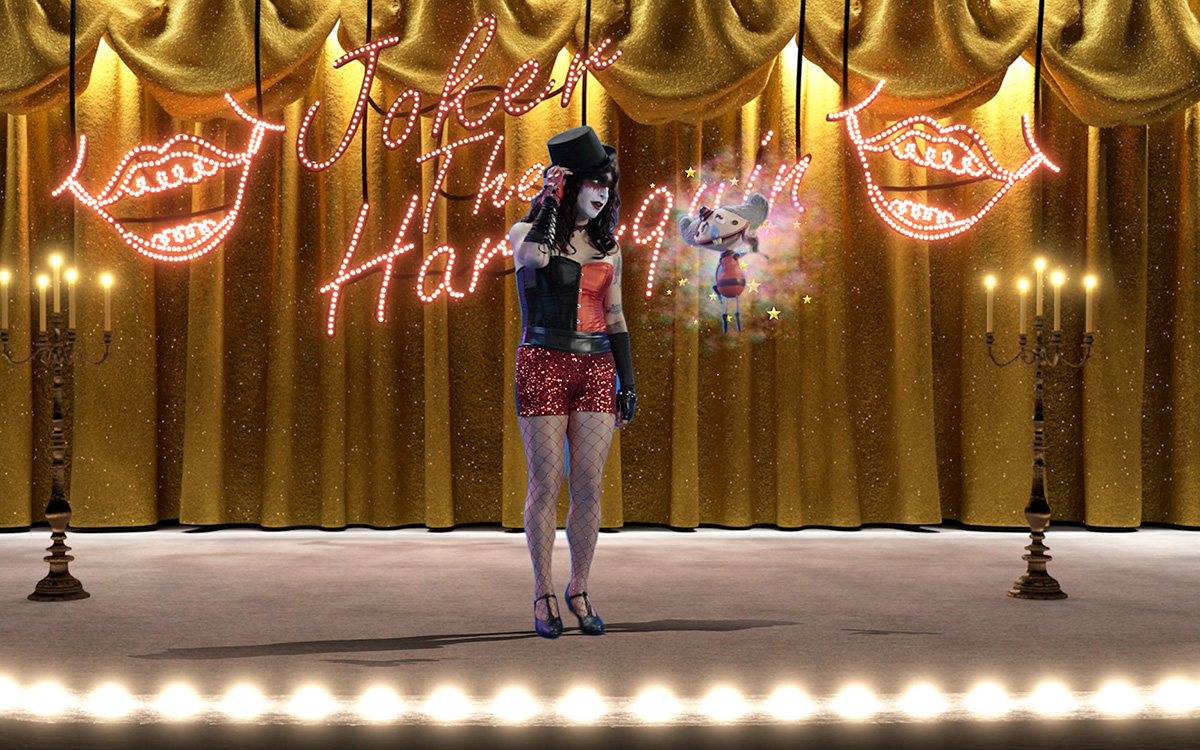
It might come as a shock to some comic book fans, but the idea of super heroes and super villains has always been very queer. Think about it: the dramatic skin-tight costumes, the dual identities and secret lives, the inability to fit in or connect because you are distanced from the “normal” world by your powers – all the standard tropes that define this genre of pop culture myth-making are so rich with obviously queer-coded subtext that it seems ludicrous to think anyone could miss it.
This is not to claim that all superhero stories are really parables about being queer, but, if we’re being honest some of them feel more like it than others; an obvious example is “Batman,” whose domestic life with a teenage boy as his “ward” and close companion has been raising eyebrows since 1940. The campy 1960s TV series did nothing to distance the character from such associations – probably the opposite, in fact – and Warner Brothers’ popular ‘80s-’90s series of film adaptations solidified them even more by ending with gay filmmaker Joel Schumacher’s much-maligned “Batman and Robin,” starring George Clooney and Chris O’Donnell in costumes that highlighted their nipples, which is arguably still the queerest superhero movie ever made.
Or at least it was. That title might now have to be transferred to “The People’s Joker,” which – as it emphatically and repeatedly reminds us – is a parody in no way affiliated with DC’s iconic “Batman” franchise or any of its characters, even though writer, director and star Vera Drew begins it with a dedication to “Mom and Joel Schumacher.” Parody it may be, but that doesn’t keep it from also serving up lots of food for serious thought to chew on between the laughs.
Set in a sort of comics-inspired dystopian meta-America where unsanctioned comedy is illegal, it’s the story of a young, closeted transgender comic (Drew) who leaves her small town home to travel to Gotham City and audition for “GCB” – the official government-produced sketch comedy show. Unfortunately, she’s not a very good comic, and after a rocky start she decides to leave to form a new comedy troupe (labeled “anti-comedy” to skirt legality issues) along with penguin-ish new friend Oswald Cobblepot (Nathan Faustyn). They collect an assortment of misfit would-be comedians to join them, and after branding herself as “Joker the Harlequin,” our protagonist starts to find her groove – but it will take negotiating a relationship with trans “bad boy” Mr. J (Kane Distler), a confrontation with her self-absorbed and transphobic mother (Lynn Downey), and making a choice between playing by the rules or breaking them before she can fully transition into the militant comic activist she was always meant to be.
Told as a wildly whimsical, mixed media narrative that combines live action with a quirky CGI production design and multiple styles of animation (with different animators for each sequence), “People’s Joker” is by no means the kind of big-budget blockbuster we expect from a movie about a superhero — or in this case, supervillain, though the topsy-turvy context of the story more or less reverses that distinction — but it should be obvious from the synopsis above that’s not what Drew was going for, anyway. Instead, the Emmy-nominated former editor uses her loopy vision of an alternative “Batman” universe as the medium for a kind of mythologized autobiography expressing her own real-life journey, both toward embracing her trans identity and forging a maverick career path in an industry that discourages nonconformity, while also spoofing the absurdities of modern culture. Subverting familiar tropes, yet skillfully weaving together multiple threads from the “real” DC Universe she’s appropriated with the detailed savvy of a die-hard fangirl, it’s an accomplishment likely to impress her fellow comic book fans — even if they can’t quite get behind the gender politics or her presentation of Batman himself (an animated version voiced by Phil Braun) as a closeted gay right-wing demagogue and serial sexual abuser.
These elements, of course, are meant to be deliberately provocative. Drew, like her screen alter ego, is a confrontation comic at heart, bent on shaking up the dominant paradigm at every opportunity. Yet although she takes aim at the expected targets – the patriarchy, toxic masculinity, corporate hypocrisy, etc. – she is equally adept at scoring hits against things like draconian ideals of political correctness and weaponized “cancel culture”, which are deployed with extreme prejudice from idealogues on both sides of the ideological divide. This means she might be risking the alienation of an audience which might otherwise be fully in her corner – but it also provides the ring of unbiased personal truth that keeps the movie from sliding into propaganda and elevates it, like “Barbie”, to the level of absurdist allegory.
Because ultimately, of course, the point of “People’s Joker” has little to do with the politics and social constructs it skewers along the way; at its core, it’s about the real human things that resonate with all of us, regardless of gender, sexuality, ideology, or even political parties: the need to feel loved, to feel supported, and most of all, to be fully actualized. That means the real heart of the film beats in the central thread of its troubled connection between mother and daughter, superbly rendered in both Drew and Downey’s performances, and it’s there that Joker is finally able to break free of her own self-imposed restrictions and simply “be” who she is.
Other performances deserve mention, too, such as Faustyn’s weirdly lovable “Penguin” stand-in and Outsider multi-hyphenate artist David Leibe Hart as Ra’s al Ghul – a seminal “Batman” villain here reimagined as a veteran comic that serves as a kind of Obi-Wan Kenobi figure in Joker’s quest. In the end, though, it’s Drew’s show from top to bottom, a showcase for not only her acting skills, which are enhanced by the obvious intelligence (including the emotional kind) she brings to the table, but her considerable talents as a writer, director, and editor.
For some viewers, admittedly, the low-budget vibe of this crowd-funded film might create an obstacle to appreciating the cleverness and artistic vision behind it, though Drew leans into the limitations to find remarkably creative ways to convey what she wants with the means she has at her disposal. Others, obviously, will have bigger problems with it than that. Indeed, the film, which debuted at the 2022 Toronto International Film Festival, was withdrawn from competition there and pulled from additional festival screenings after alleged corporate bullying (presumably from Warner Brothers, which owns the film rights to the Batman franchise) pressured Drew into holding it back. Clearly, concern over blowback from conservative fans – who would likely never see the film anyway – was enough to warrant strong arm techniques from nervous execs. Nevertheless, “The People’s Joker” made its first American appearance at LA’s Outfest in 2023, and is now receiving a rollout theatrical release that started on April 5 in New York, and continues this week in Los Angeles, with Washington DC and other cities to follow on April 12 and beyond.
If you’re in one of the places where it plays, we say it’s more than worth making the effort. If you’re not, never fear. A VOD/streaming release is sure to come soon.
Movies
Star turn makes excellent ‘Ripley’ a showcase for Andrew Scott
Reasserting the queerness of an author who boldly pushed boundaries
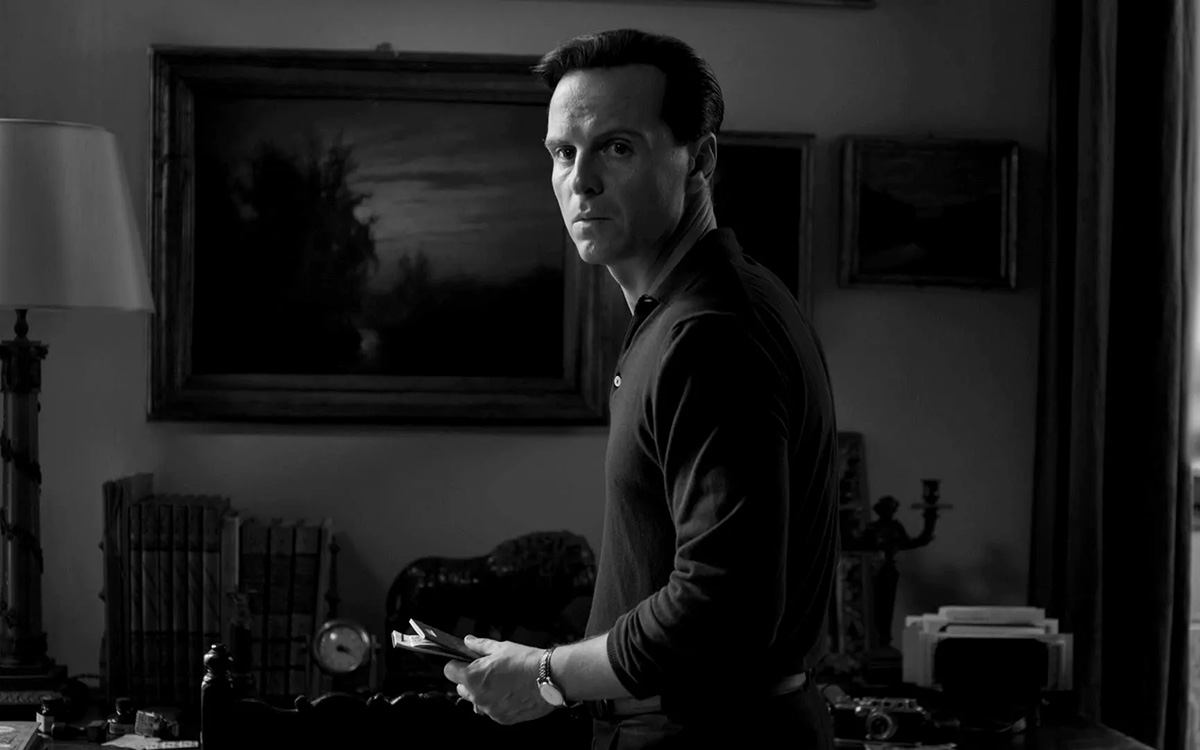
There’s something about an anti-hero that appeals to us all. Why else would so many of our greatest stories revolve around a character whose behavior goes against everything we’ve been raised to believe is right?
Actually, that question probably answers itself. For many of us, the things we are raised to accept about life in the human world often feel less acceptable once we’ve gone through a few years of adult experience, which tends to put us at odds with the so-called “norms” of conformity. Naturally, this can be frustrating from time to time – and while that might not be enough to make us go “rogue” without regard law or ethics, it’s certainly sufficient to fuel our guilty fantasies.
That, along with the literary skills of Patricia Highsmith, the queer novelist who created him, is why the character of Tom Ripley has been engrossing us in various forms for nearly 75 years. The eponymous anti-hero of “The Talented Mr. Ripley” (originally published in 1955) went on to feature in three additional books by Highsmith, and was subsequently brought to life in multiple small-and-big-screen incarnations, perhaps most prominently by Matt Damon in Anthony Minghella’s 1999 film adaptation. These versions managed to skirt the book’s obvious queer subtext, but queer audiences recognized it anyway. Now, thanks to creator, writer, and director Steve Zaillian, Highsmith’s starry-eyed sociopath has returned in an eight-episode series – which pares the title down to the short-but-evocative “Ripley” – that debuts on Netflix April 4, and portrays his adventures with an eye toward honoring Highsmith’s intent while delivering the kind of up-front queerness that the author could never have dreamed of accomplishing in her heyday.
Not that this “Ripley” is exactly “out and proud,” though the actor who plays him – Andrew Scott (“All of Us Strangers”) – certainly is. The acclaimed Irish thespian brings his own queerness to the table in illuminating a character whose survival depends on never calling attention to himself – and though the series moves the action ahead a few years to1960, it’s still a world where any hint of “deviance” is likely to draw suspicion. That’s the last thing Tom Ripley needs; he’s a con artist, the mid-20th-century equivalent of modern-day “phishing” scammers, grifting gullible marks from his squalid, one-room New York City apartment. He’s good at what he does, an anonymous figure hiding in a sea of strangers – but when a wealthy shipping magnate tracks him down with a request for help and the offer of an all-expenses-paid excursion to Italy, he sees it as an opportunity to change his life for the better.
That opportunity, as it turns out, involves a barely remembered college acquaintance named Dickie (Johnny Flynn), whose post-graduation trip to Europe has become a years-long vacation on the Mediterranean coast from which his father – Ripley’s surprise benefactor – would like him to return. Sent on a mission to convince his old schoolmate to go home, he is instead spellbound by the idyllic seaside setting and opulent lifestyle that surrounds him – and also by Dickie himself. He ingratiates himself into the young man’s life, winning his sympathies despite some initial awkwardness. Not so easily persuaded is Dickie’s girlfriend, Marge (Dakota Fanning), whose lingering distrust must be overcome if Ripley is to enact his new master plan to claim Dickie’s life of expatriate luxury as his own.
Thanks to its source’s relative familiarity, “Ripley” makes no effort to hide the fact that its anti-hero is a shady guy; we see from the start that he’s a liar and an opportunist. What Zaillian manages to do, unlike others who have adapted the novel, is move past a clinical focus on Ripley’s psychology to give us a less prosaic – and therefore more complex – interpretation of the character. Much of this comes from a script that echoes Highsmith’s hard-boiled style by framing the story (and its protagonist) in a shadowy, amoral universe, enhanced by the stylish black-and-white treatment delivered by Robert Elswit’s cinematography, which leans into both the paradigm-challenging Euro “art cinema” from the period of its setting and the gritty chiaroscuro contrasts of film noir, setting up an instinctual understanding that this narrative, like its visuals, is composed entirely in shades of gray.
In the show’s engrossing first episode, this is a particularly effective hook, style coupling with context to underscore the bleakness of Ripley’s daily routine in New York, which is no less soul-crushing, perhaps, than the more lawful ones into which most of us are locked. Though we see that he’s a predator, it’s hard not to relate to his struggle, and by the time we get to the next chapter and meet Dickie and Marge, we’ve already entered a mindset in which easy ethical judgments become unconvincing and shallow. Our sympathies are effectively split; we’re either on nobody’s side or on everyone’s, and maybe it’s a little bit of both.
Needless to say, perhaps, this tricky transference would not be possible without the presence of a consummate actor in the title role, and Scott fits the bill beyond expectation. Though at first he reads as a bit old for the character, that notion quickly disperses – indeed, his weathered features bespeak the effects of a hard-knock life, the kind that makes a person willing to do anything to break free. More crucially, the unmistakable authenticity of his inner life is communicated with exquisite precision, engaging our empathy even as we recoil from the Machiavellian logic that guides him, and the clear conflict between his not-so-hidden feelings for Dickie and the agenda to which he has committed is made all the more stark by the ring of queer truth that underpins the performance. It’s a tour-de-force turn by an actor whose skills become more breathtaking with each subsequent role.
Fanning, whose equally adept performance provides a powerful counterpoint to Scott’s, is a strong contender for our sympathies, by virtue as much of the intelligence she brings as the peril into which it will eventually put her, and Flynn’s Dickie wears the weight and damage of his upper class status like a chain he can never quite break, making us dread the seemingly inevitable fate that awaits him even as we subliminally sign on to Ripley’s endgame with a sense of guilty (but unapologetic) satisfaction. Also notable is nonbinary actor Eliot Summers (child of former Police frontman Sting), who brings another level of queer identity into the narrative as another old acquaintance of Dickie’s that throws an unwelcome wrench into the works of Ripley’s plan.
Based on its first two episodes, “Ripley” certainly lives up to the anticipation that naturally awaits any adaptation of a high-profile story, and reasserts the queerness of an author who boldly pushed boundaries as far as censors of her time would allow. That’s more than enough to warrant staying with it until the end – and, if audience numbers warrant a renewal, through additional installments that might chronicle the less well-known escapades spun in Highsmith’s sequels. What cinches the deal, though, is the masterful performance that takes centerstage, which represents yet another escalation – and well-deserved triumph – in the rise of the talented Mr. Scott.
-

 Africa4 days ago
Africa4 days agoCongolese lawmaker introduces anti-homosexuality bill
-

 District of Columbia16 hours ago
District of Columbia16 hours agoReenactment of first gay rights picket at White House draws interest of tourists
-

 World4 days ago
World4 days agoOut in the World: LGBTQ news from Europe and Asia
-

 Arizona20 hours ago
Arizona20 hours agoAriz. governor vetoes anti-transgender, Ten Commandments bill


